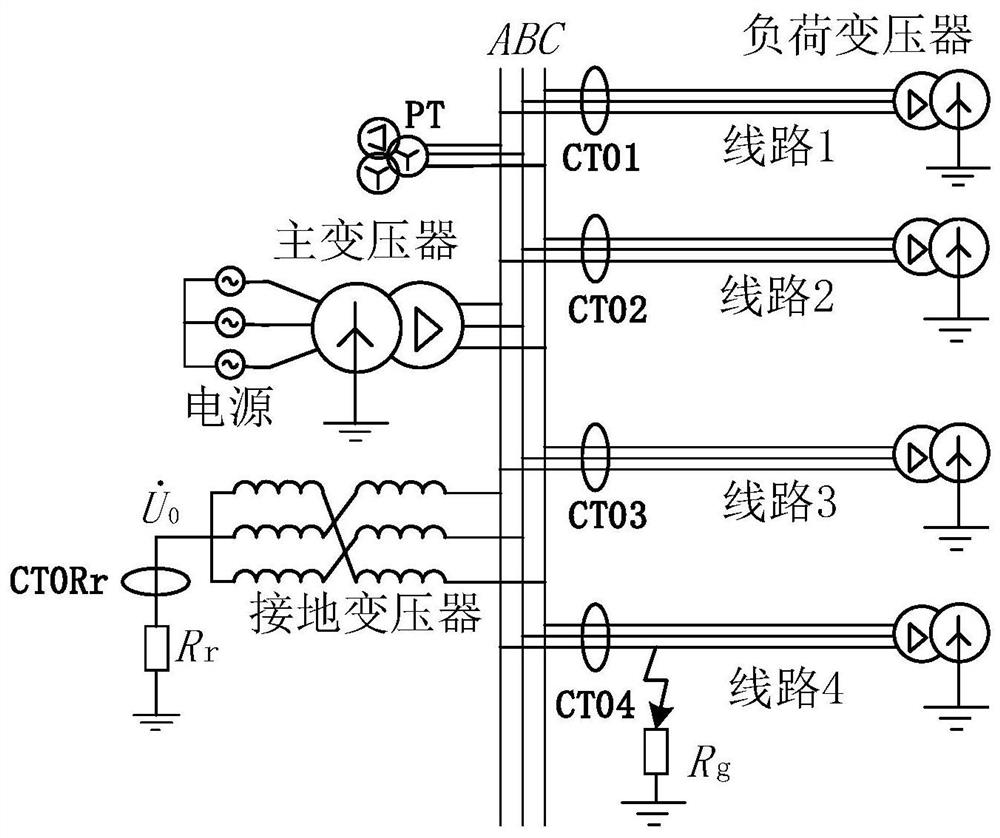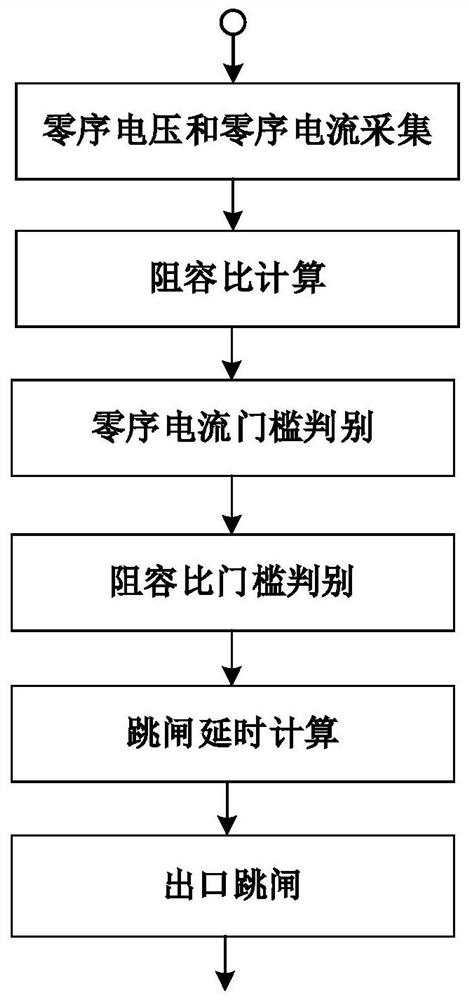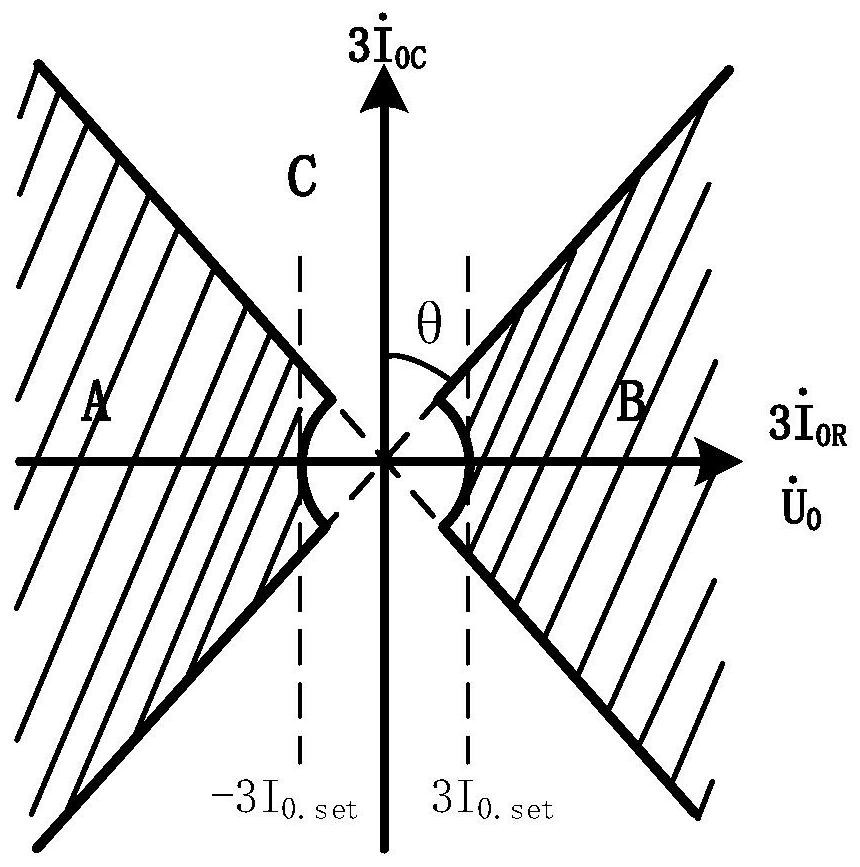A zero-sequence overcurrent protection method blocked by resistance-capacity ratio
A technology of zero-sequence overcurrent and zero-sequence current, applied in the direction of automatic disconnection emergency protection devices, emergency protection circuit devices, electrical components, etc., can solve problems such as potential safety hazards, no protection, and failure to trip, so as to ensure reliability , Improve safety, improve sensitivity
- Summary
- Abstract
- Description
- Claims
- Application Information
AI Technical Summary
Problems solved by technology
Method used
Image
Examples
Embodiment 1
[0081] Embodiment 1: Write a program according to the above theory, and run it in the protection device. The protection device collects zero-sequence voltage and zero-sequence current, and calculates the resistance-to-capacity ratio. The ground transition resistance R g When 1Ω, 80Ω, 100Ω, 300Ω, and 600Ω are taken, the calculation results of the protection device are shown in Table 1. Table 1, 3I 0 is the zero-sequence current of the fault line, |K RC0 | F is the resistance-to-capacity ratio of the fault line, |K RC0 | N is the resistance-to-capacity ratio of one of the non-fault lines. The results in Table 1 are consistent with the aforementioned theoretical derivation.
[0082] Table 1 Calculation results of resistance-capacity ratio when line 4 is faulty
[0083]
[0084]Based on the above theoretical analysis and the calculation results of Example 1, the present invention proposes a zero-sequence overcurrent protection method blocked by the resistance-to-capacity...
Embodiment 2
[0104] Embodiment 2: Write a program according to a zero-sequence overcurrent protection method blocked by the resistance-to-capacity ratio condition of the present invention, and run it in a protection device. The protection device operates in a 10kV voltage level neutral point grounded system through a small resistance , the protection device collects zero-sequence voltage and zero-sequence current to identify single-phase ground faults, especially high-resistance ground faults. The grounding substation is located at the 10kV busbar, and the small resistance of the neutral point is 10Ω. The line parameters are zero-sequence resistance 1.35Ω / km, zero-sequence inductive reactance 1.104Ω / km, zero-sequence capacitive reactance 0.1555MΩ*km, and line lengths are 45km, 35km, 50km, and 65km respectively. The PT transformation ratio is 10kV / 100V, and the zero-sequence CT transformation ratio is 100 / 1. The zero-sequence overcurrent protection of the protection device is blocked by th...
PUM
 Login to View More
Login to View More Abstract
Description
Claims
Application Information
 Login to View More
Login to View More - R&D
- Intellectual Property
- Life Sciences
- Materials
- Tech Scout
- Unparalleled Data Quality
- Higher Quality Content
- 60% Fewer Hallucinations
Browse by: Latest US Patents, China's latest patents, Technical Efficacy Thesaurus, Application Domain, Technology Topic, Popular Technical Reports.
© 2025 PatSnap. All rights reserved.Legal|Privacy policy|Modern Slavery Act Transparency Statement|Sitemap|About US| Contact US: help@patsnap.com



